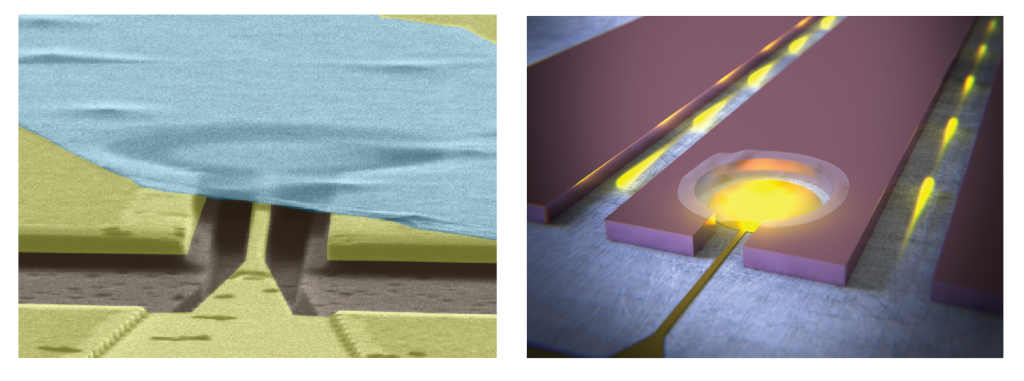Graphene is famous for the relativistic way that electrons in the material move, but more recently, researchers have started studying how the graphene sheet itself moves when you make it into a mechanical resonator like a drumhead.
In our recent work in Nature Nanotechnology, we have used a superconducting microwave cavity coupled to a graphene membrane to study the drum’s motion at milliKelvin temperatures. By peeling off a graphene flake on top of a superconducting metal used to trap microwave photons, Singh et al from the SteeleLab have used microwave “light” to detect the position of the membrane. By bouncing this light off of the graphene sheet, which acts as a moving “mirror”, the researchers were also able to “beat the drum”, shaking it using the radiation pressure from the momentum of light.
For more information, including an animation of the microwave photons bouncing off the drum, see our press release on the TU-Delft website.
Left: Colorized electron microscope image of the graphene drum used in the experiment. The blue shows the graphene sheet, the yellow shows the superconducting metal that forms the cavity. Right: An artist impression of microwave photons (yellow comets and glow) propagating in the gaps of the superconducting waveguide and interacting with the graphene drum (transparent sheet).
